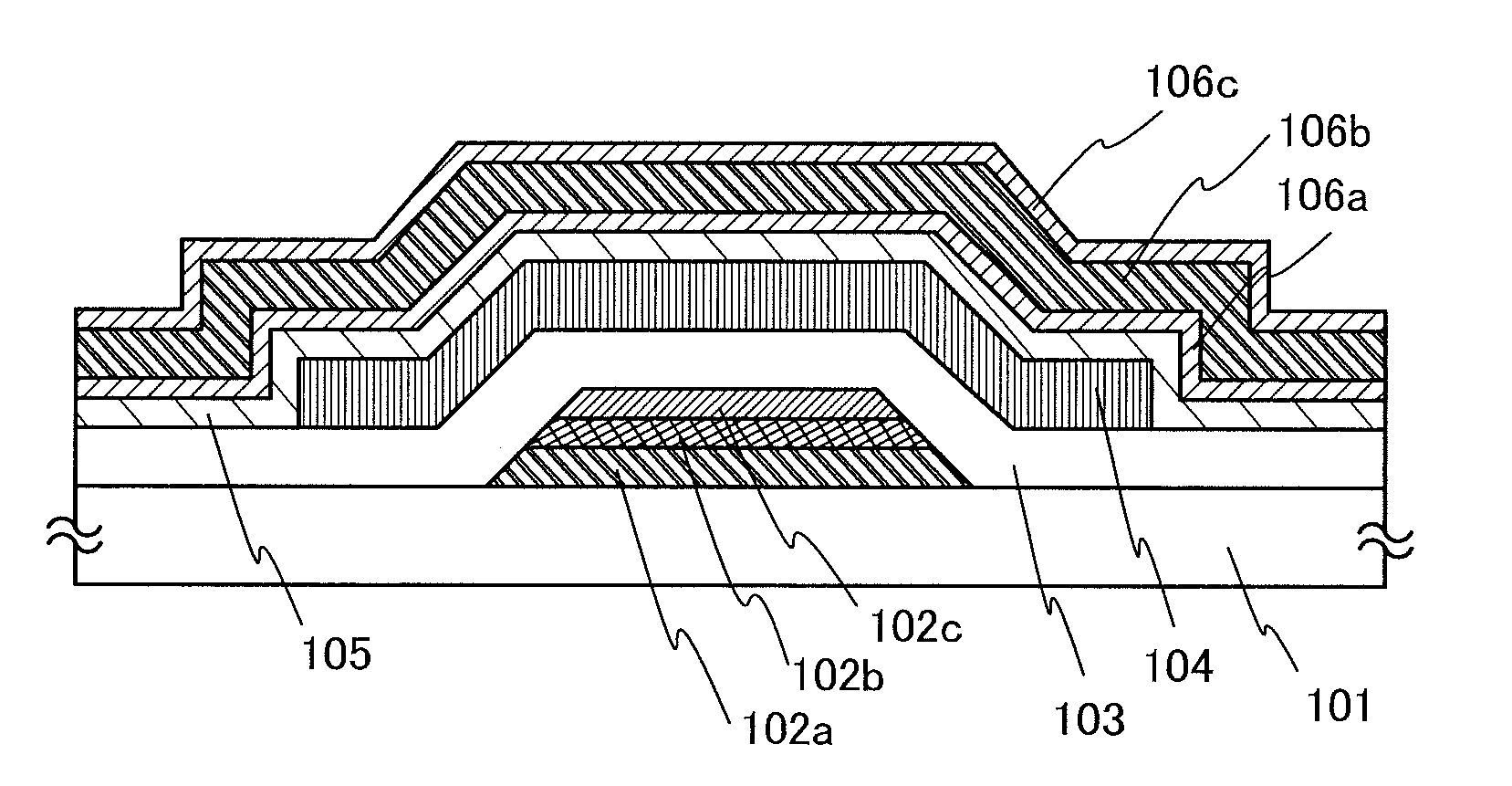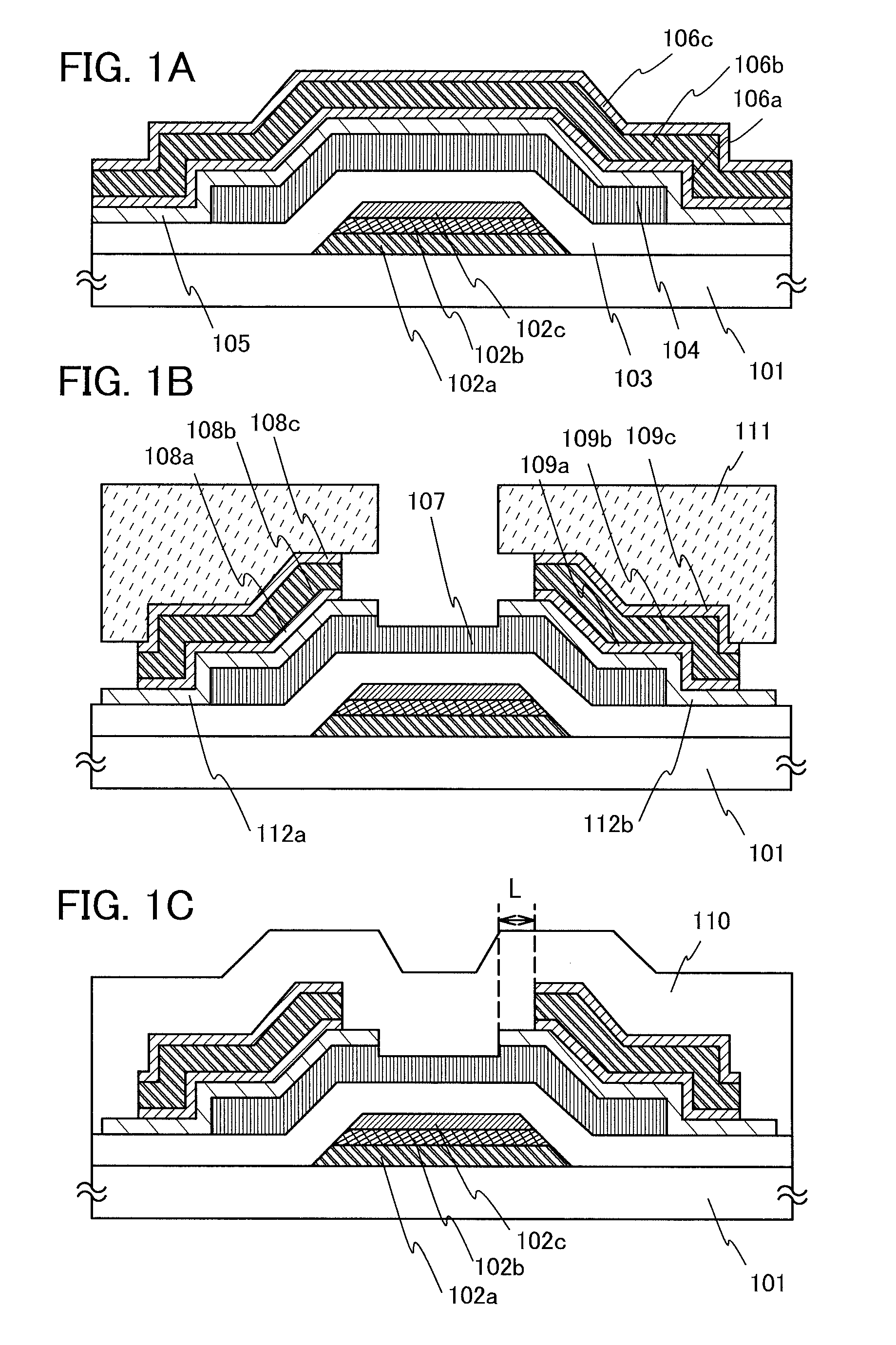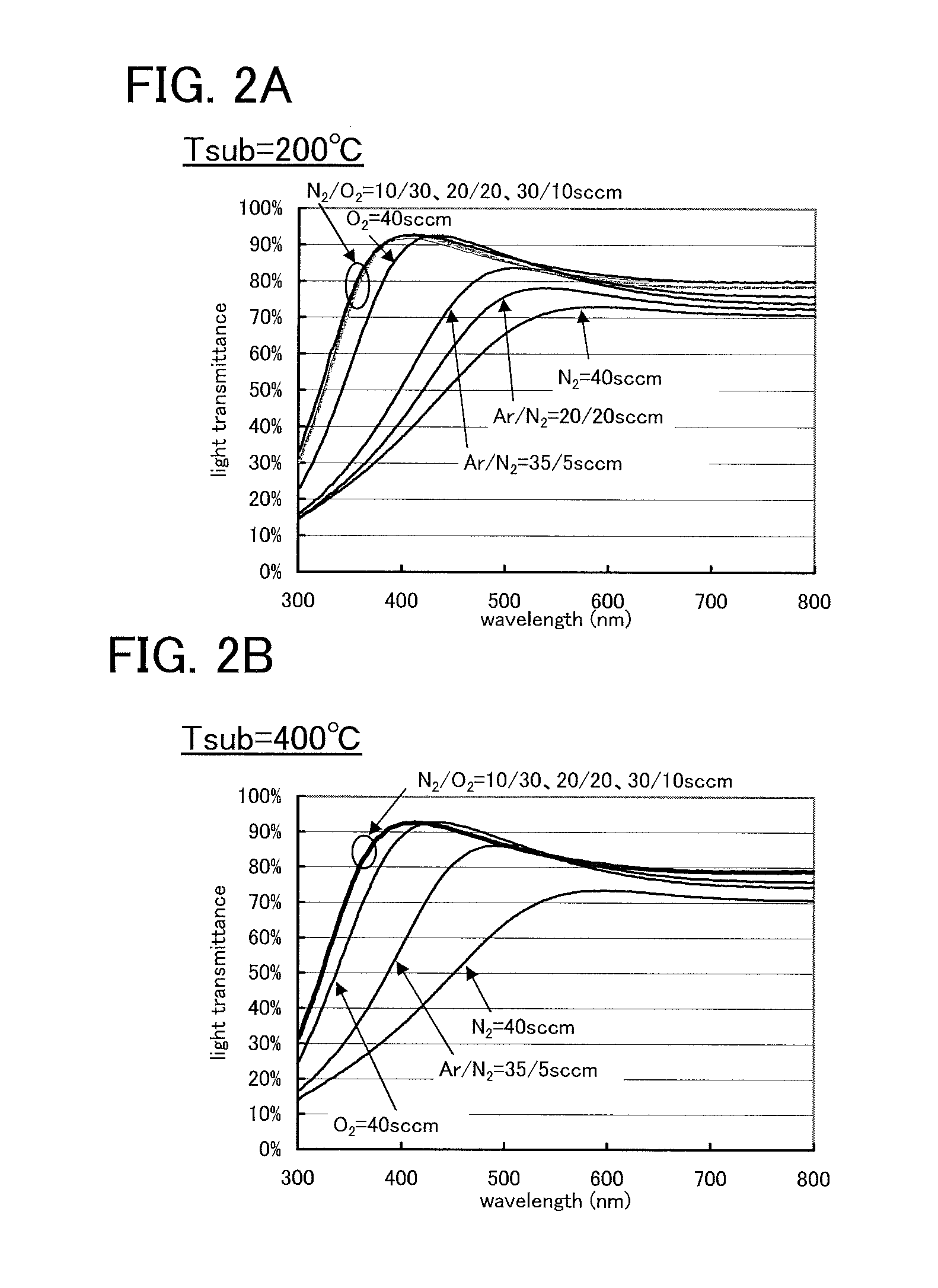Semiconductor device and manufacturing method thereof
a technology of semiconductor devices and manufacturing methods, applied in semiconductor devices, electrical equipment, transistors, etc., can solve the problems of difficult control of circuits and unsuitable drain current flows, and achieve the effect of improving the reliability of transistors driven at high voltage or large currents
- Summary
- Abstract
- Description
- Claims
- Application Information
AI Technical Summary
Benefits of technology
Problems solved by technology
Method used
Image
Examples
embodiment 1
[0042]In this embodiment, an example of manufacturing a transistor over a substrate is described using FIGS. 1A to 1C.
[0043]First, a conductive film including three layers whose materials are different from one another is formed over a substrate 101, a resist mask is formed over the conductive film with a first photomask, and etching is performed selectively thereon, whereby a gate electrode layer is formed. After that, the resist mask is removed. If necessary, a base insulating film of a silicon oxide, a silicon nitride, a silicon oxynitride, a silicon nitride oxide, or the like may be provided ahead of formation of the conductive film.
[0044]As a material of the substrate 101, a glass material such as aluminosilicate glass, aluminoborosilicate glass, or barium borosilicate glass can be used. In the mass production, a mother glass with the following size is preferably used for the substrate 101: the 8-th generation (2160 mm×2460 mm); the 9-th generation (2400 mm×2800 mm, or 2450 mm×...
embodiment 2
[0085]In this embodiment, an example of manufacturing a transistor and a pixel electrode with four photomasks in total which is smaller than the number of photomasks in Embodiment 1 by one is described using FIG. 4 and FIGS. 5A to 5D. In this embodiment, the manufacturing of the transistor is different from Embodiment 1 just in part thereof; thus, detailed description of the same portion is omitted in this embodiment.
[0086]FIG. 4 is a top view illustrating a plan structure of a pixel 310, and FIGS. 5A to 5D are cross-sectional views illustrating a stacked-layer structure of the pixel 310. Chain lines A1-A2, B1-B2, C1-C2, and D1-D2 in FIG. 4 correspond to cross sections A1-A2, B1-B2, C1-C2, and D1-D2 in FIGS. 5A to 5D, respectively.
[0087]In a transistor 311 described in this embodiment, a drain electrode layer 206b is partly surrounded by a U-shaped (C-shaped or horseshoe-shaped) source electrode layer 206a. With such a shape, a sufficient channel width can be ensured even when the a...
embodiment 3
[0102]Described in Embodiments 1 and 2 are an example of a bottom gate transistor. In this embodiment, an example of manufacturing a top gate transistor is described. In FIGS. 6A to 6C, the same portions as those shown in FIGS. 1A to 1C are denoted by the same reference numerals.
[0103]Further, according to this embodiment, an oxide semiconductor layer is formed by deposition two times.
[0104]First, an oxide insulating film 160 which serves as a base insulating layer is formed over a substrate 101.
[0105]The oxide insulating film 160 is formed using an oxide insulating film from which part of oxygen is released by heat treatment. The oxide insulating film which contains oxygen over the stoichiometric proportion is preferably used as the oxide insulating film from which part of oxygen is released by heat treatment. With the oxide insulating film from which part of oxygen is released by heat treatment, oxygen can be diffused into a crystalline oxide semiconductor film by heat treatment. ...
PUM
 Login to View More
Login to View More Abstract
Description
Claims
Application Information
 Login to View More
Login to View More - R&D
- Intellectual Property
- Life Sciences
- Materials
- Tech Scout
- Unparalleled Data Quality
- Higher Quality Content
- 60% Fewer Hallucinations
Browse by: Latest US Patents, China's latest patents, Technical Efficacy Thesaurus, Application Domain, Technology Topic, Popular Technical Reports.
© 2025 PatSnap. All rights reserved.Legal|Privacy policy|Modern Slavery Act Transparency Statement|Sitemap|About US| Contact US: help@patsnap.com



